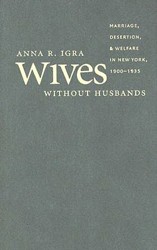Jeffrey S. Gurock has had a long relationship with Harlem. His paternal grandparents, immigrants from Gomel in White Russia, arrived in America in 1905 and settled in Harlem. At that time Harlem contained the third largest Jewish community in the world, surpassed only by Warsaw and the Lower East Side of New York City, and was a stepping stone for Jews able to escape the slums. Gurock’s family moved during the early 1930s from Harlem to the Bronx, another step up the economic and social ladder, where he was born, raised, and still lives. He graduated from the City University of New York, the “Jewish Harvard,” and then went on to Columbia University for graduate work in American history.
At Columbia he fell under the influence of three prominent historians: the urban historian Kenneth S. Jackson, the social historian David Rothman, and the Jewish historian Naomi W. Cohen. One can see Harlem from the campus of Columbia, and tensions between blacks and Jews were rife during the 1960s when it came time for Gurock to choose a dissertation topic. And so it is not surprising that he chose to investigate the Harlem Jewish community during its heyday. He followed the advice of Jackson to focus not on Harlem elites, but to concentrate on the interaction between ordinary blacks and Jews, to write history “from the ground up” as it was described then. The dissertation, after suitable revision, became Gurock’s first book: When Harlem Was Jewish, 1870 – 1930 (Columbia University Press, 1979). This was the beginning of a career that would soon catapult him into the highest ranks of American Jewish historians. Since 1979, he has written or edited seventeen additional books and authored many scholarly articles on a diverse group of topics, including Jews in sports, the theologian Mordecai Kaplan, and Yeshiva University, his home institution, where he has a chair in American Jewish history. Gurock has become the most important and prolific contemporary historian of New York’s Jews and the unquestioned authority on the history of American Orthodoxy.
Now, after a forty-year hiatus, he has returned to his first interest, to see what has happened to Harlem and its Jewish residents since 1930. One of the factors prompting Gurock to take a second look at the area has been the recent economic revival of New York City in general and of Harlem in particular. During the past couple of decades the city has experienced a startling turnabout from the dark days of the 1960s and 1970s when arson and abandonment had depleted the city’s housing stock and the crack cocaine epidemic had made some of the city’s neighborhoods virtually unlivable. By the 1970s, Harlem’s population had declined by more than 30%. Since then the city has experienced a near-miraculous recovery. Its population has increased, neighborhoods once considered slums have been gentrified, real estate prices have skyrocketed, its cultural institutions have become even more important, tourism has increased, its streets are safer, and its universities have become more attractive to out-of-state students. This has occurred despite the collapse of manufacturing in the city, most notably the garment industry.
Harlem has been a beneficiary of this renewal, and whites, including Jews, have moved back into the area, attracted by real estate prices lower than in other parts of Manhattan and by the area’s proximity via the subway system to midtown and Wall Street. Some blacks justifiably fear that the less affluent are being pushed out of Harlem, and that its future as the cultural capital of black America is endangered. Today, Gurock notes, “there are more whites than African Americans in Harlem,” and the largest group in Harlem are Latinos, primarily Puerto Ricans. (The same phenomenon of whites moving into black neighborhoods has also occurred in Brooklyn, and has resulted in the same complaints.)
Much of the rise and decline of Harlem’s Jewish community covers events and personalities discussed in When Harlem Was Jewish. At the turn of the twentieth century, Jews comprised the largest ethnic group in Harlem. By the 1920s, however, there were clear signs that the future of the Jewish community was bleak. This was due to many factors, including immigration legislation of the 1920s drastically limiting Jewish immigration from Eastern Europe, the migration of blacks from the South into Harlem after World War I, a boom in residential construction throughout the city, a decline in the number of the city’s neighborhoods restricting Jewish settlement, and Jewish upward economic mobility. Not predicted was the rapidity of this hollowing out of Harlem’s Jewish population. Between 1923 and 1925 it shrunk from 160,000 to 123,000, a decline of over twenty percent. Two years later Harlem had only 88,000 Jewish residents, and in 1930 less than six thousand. By then, Gurock writes, “the era of Jewish residential life in Harlem was well-nigh over.” Blacks occupied the apartments deserted by the Jews, and by 1930 there were 165,000 blacks living in Harlem, most of them poor.
The “revival” period is covered in the concluding sixty pages of The Jews of Harlem. This is the least satisfying part of the book because the presence of Jews in Harlem during the last eighty-five years has been sporadic and sparse. Thus Gurock devotes three pages to Al Jolson, who grew up in Washington, D.C. and whose only relationship to Harlem was as an entertainer. The Great Depression is barely discussed, and there is no mention at all of World War II, despite its important social impact.
Gurock believes approximately seven thousand Jews now reside in Harlem, largely in the same areas where the more affluent Jews lived a century ago. In a recent interview Gurock was asked to predict the future of Jews in Harlem. While Jews have returned to Harlem, he noted, “Judaism as a religion has been slow to come back to a community that once had hundreds of synagogues and educational and cultural institutions.” The young “gentrifiers” of Harlem, by and large, exhibit little interest in Judaism. Nevertheless, there are signs of a Jewish religious and cultural revival in Harlem with the establishment of the Harlem Minyan (2012), the Harlem Hebrew Language Academy Charter School (2013), and the Harlem Jewish Community Center (2016). “It’s only the beginning,” Gurock said. “Let’s see what happens.” The move of middle-class blacks and whites, including Jews, into Harlem and the displacement of poor blacks reminds us that New York City, and Harlem in particular, “is ultimately a work in progress.”
Related Reads:



